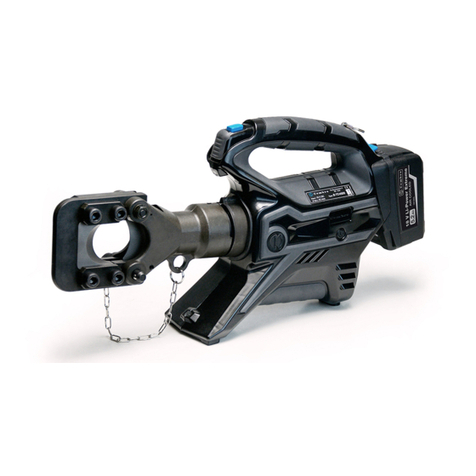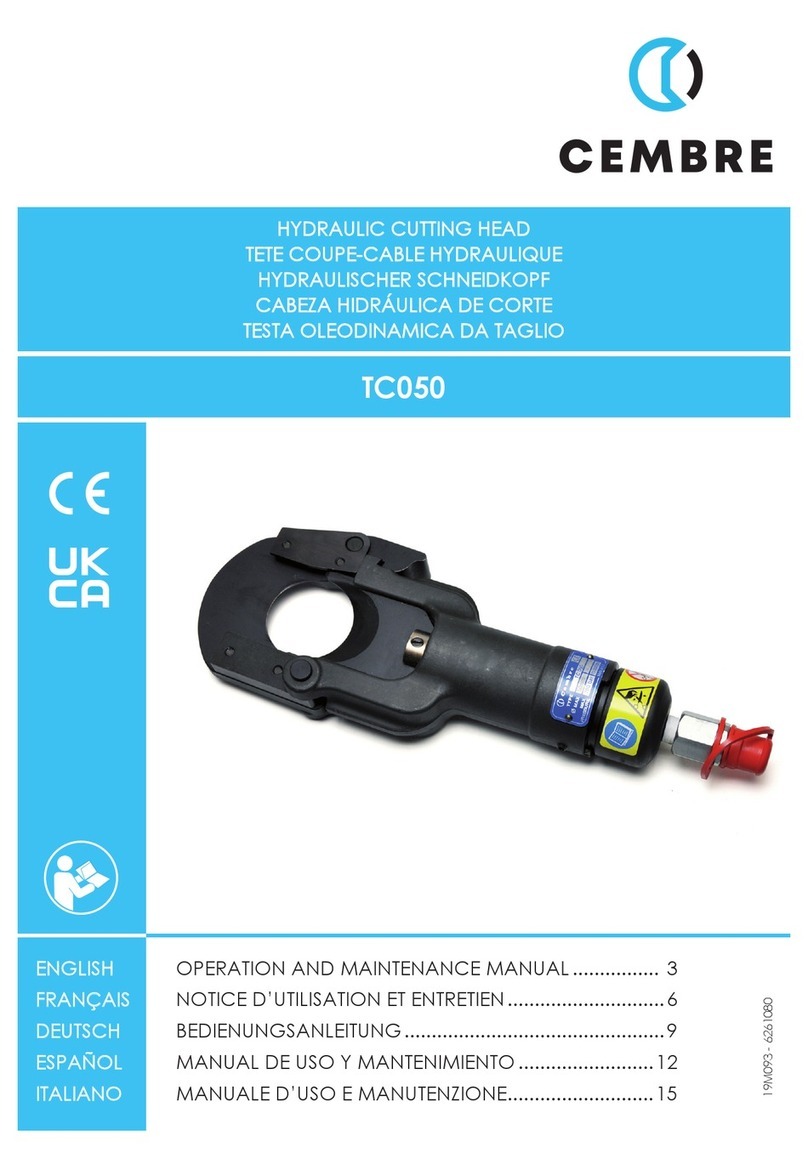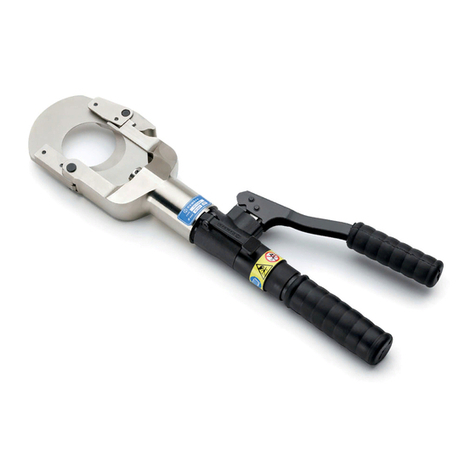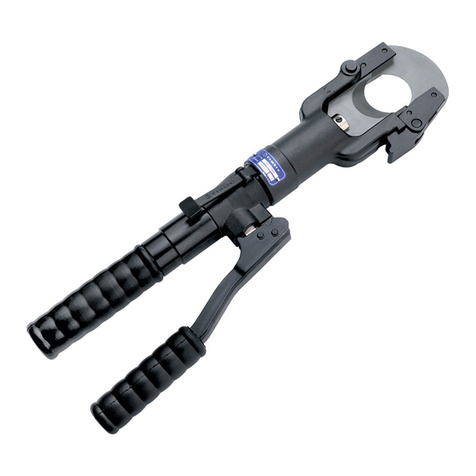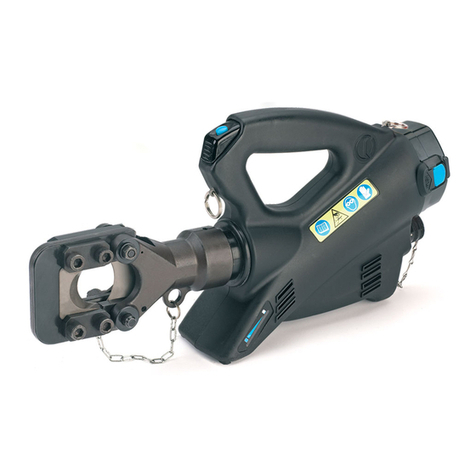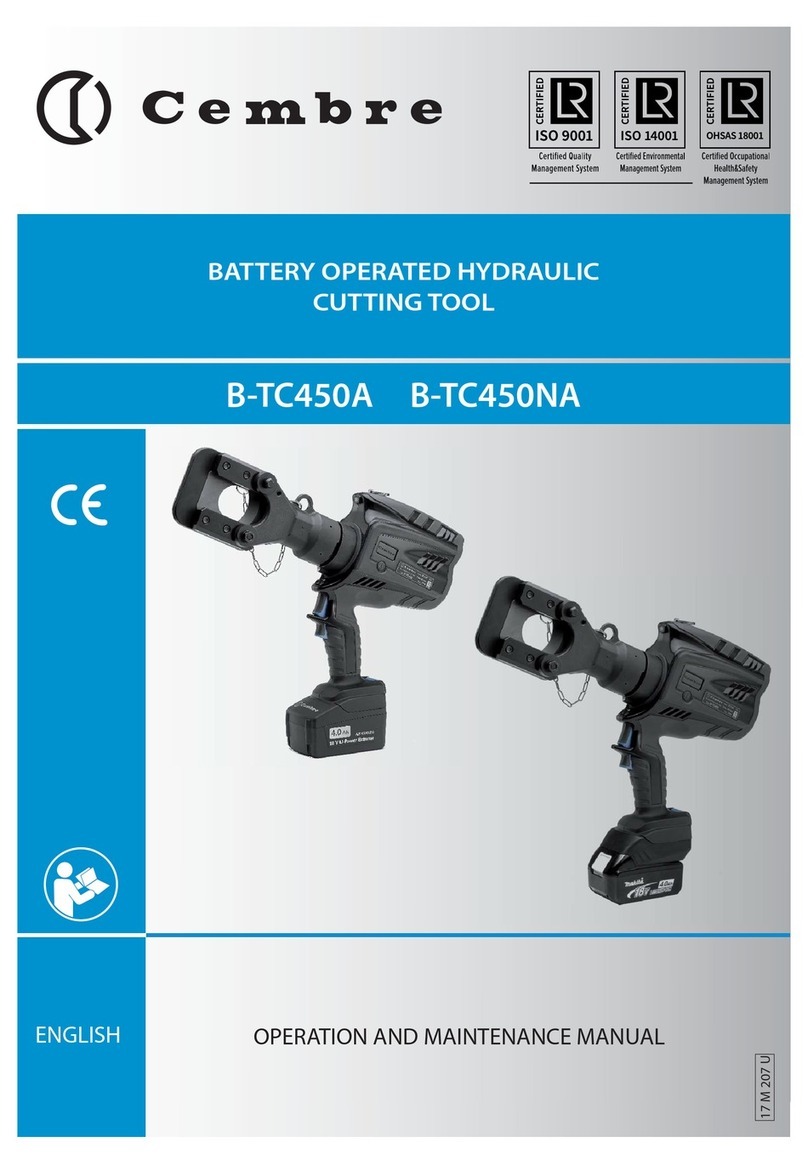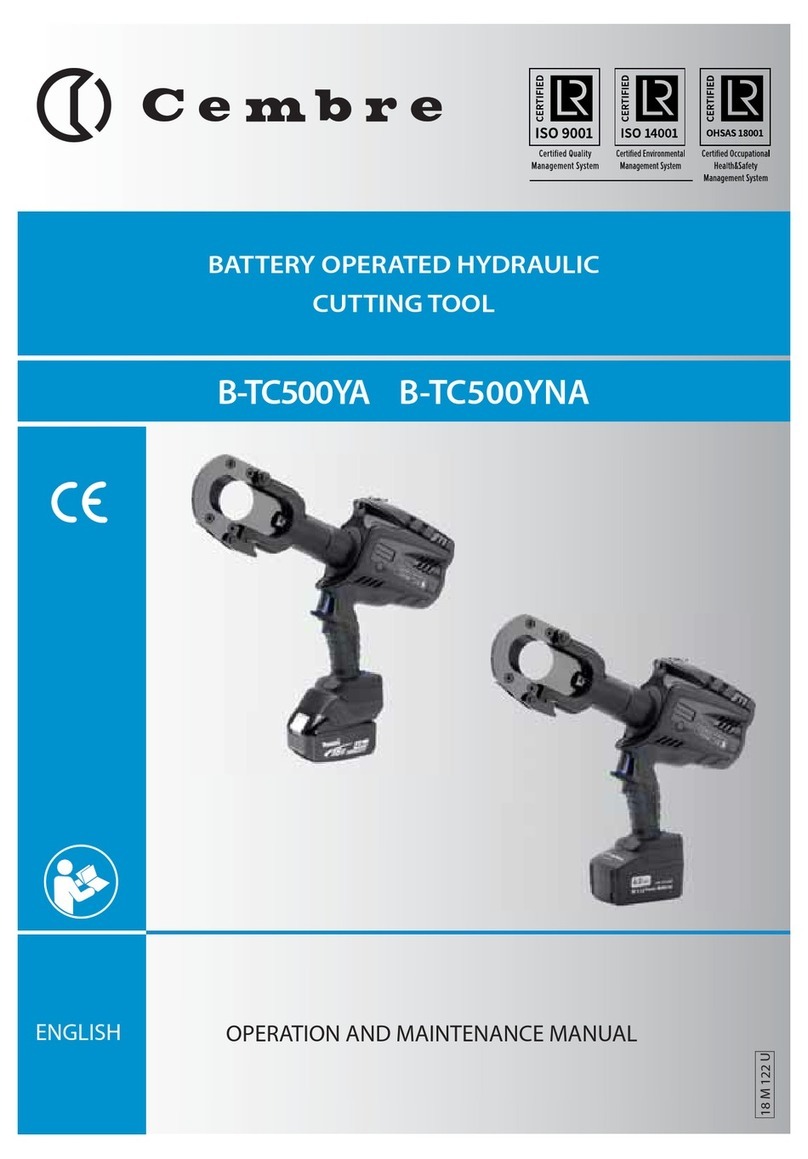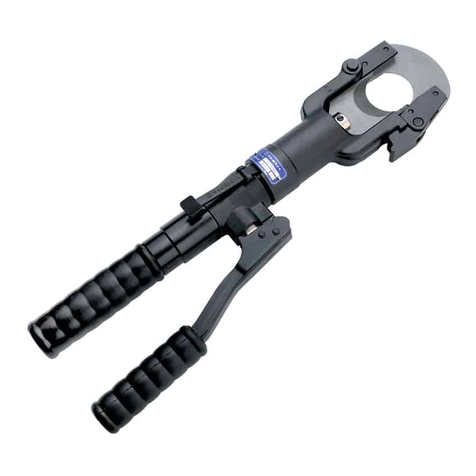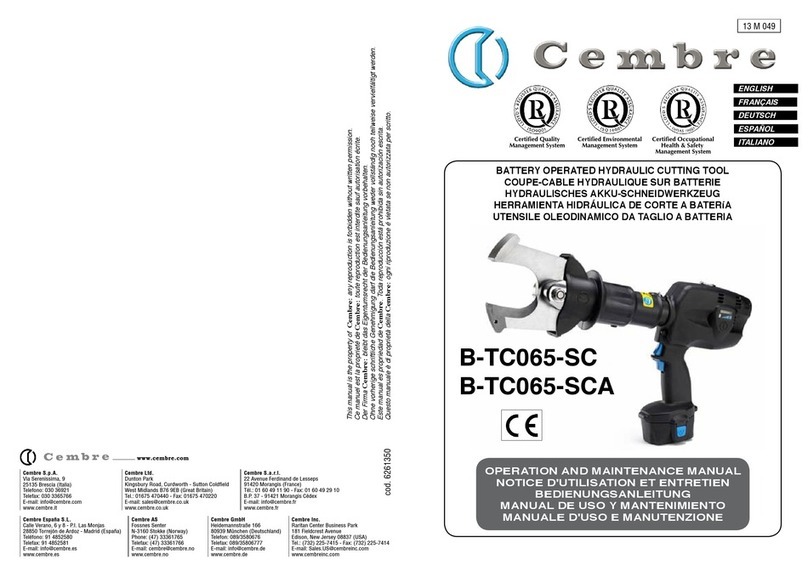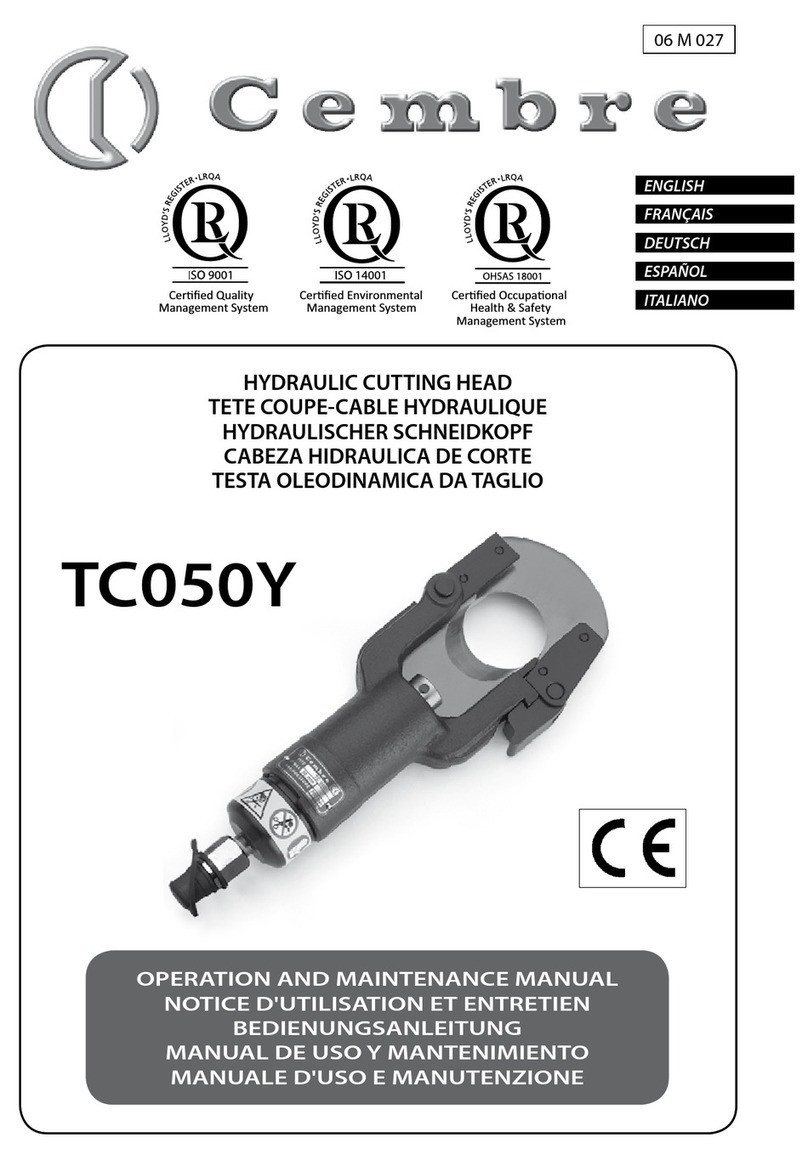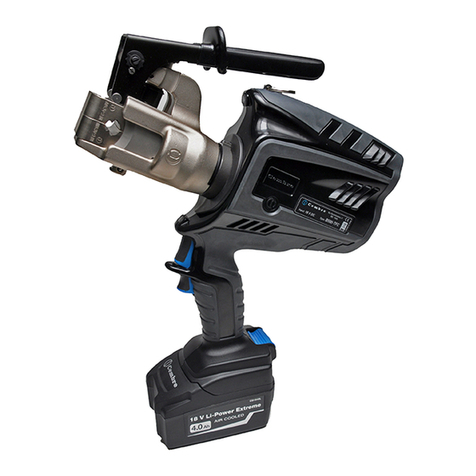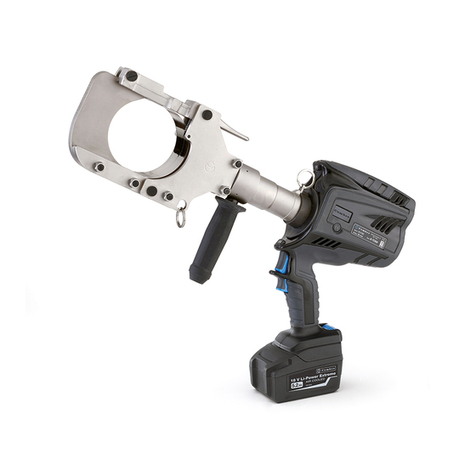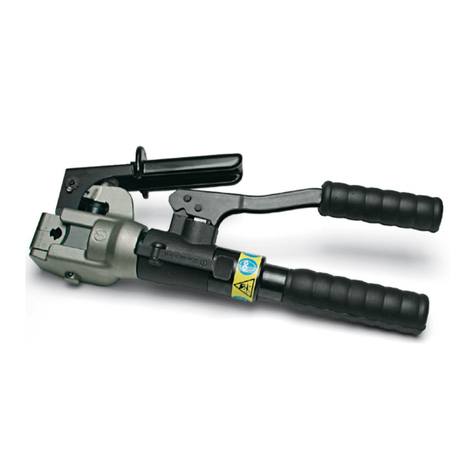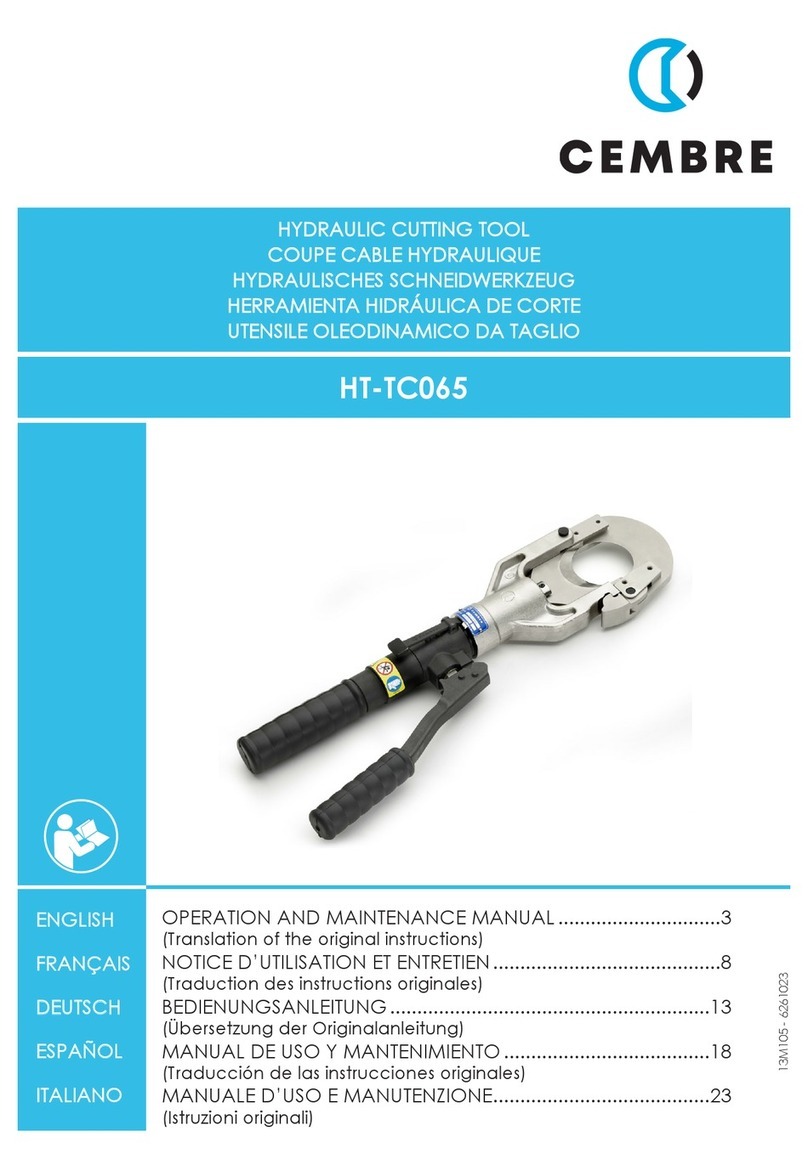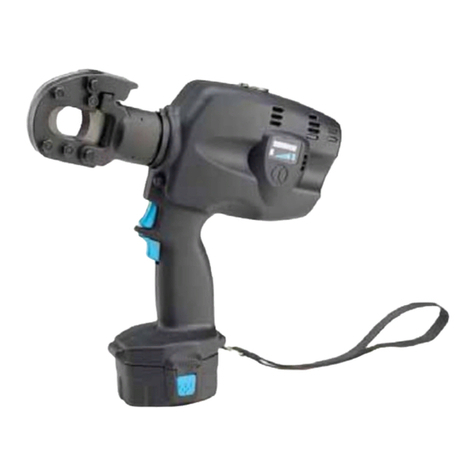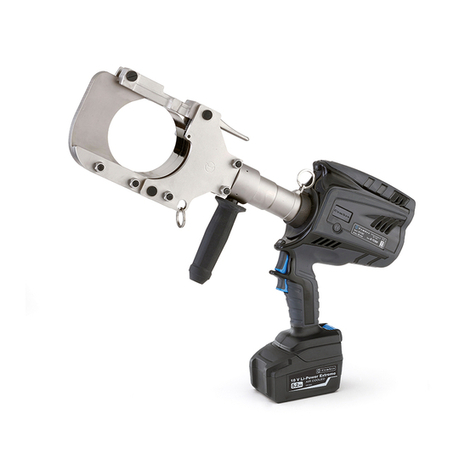
9
FRANÇAIS
2. INSTRUCTIONS D'UTILISATION
2.1) Mise en service
Choisir le type de bloc-matrices adapté au conducteur (fil de contact ou conducteur) à couper; deux
types de bloc-matrices sont prévus:
– Pour la coupe des fils rainurés de contact: le bloc-matrices a une forme qui reproduit le profil
du fil de contact à couper.
– Pour la coupe de conducteurs: le bloc-matrices est de dimensions adaptée au conducteur à
couper.
2.2) Positionnement (Voir Fig. 1, 2, 3 et 4)
– Introduire le bloc-matrices à l'intérieur de l'outil (voir § 2.6).
– Placer le conducteur à l'intérieur du bloc-matrices de façon à ce que la lame (13) se trouve au
niveau du point de coupe souhaité.
– Fermer les matrices (voir fig. 2) en portant la poignée de blocage (18) vers le bas jusqu'à son
verrouillage; le conducteur est alors positionné pour la coupe (voir fig. 3).
– Appuyer sur la gâchette de commande (4) pour mettre en marche le groupe moteur-pompe;
la lame commence à s’approcher du conducteur (voir fig. 4).
Avant de procéder à l'opération de coupe, veiller à ce que l'axe (17) soit engagé à fond et que la
poignée de blocage (18) soit parfaitement verrouillée.
S'assurer que la lame se trouve au niveau du point de coupe souhaité; sinon desserrer les matrices
en suivant les instructions du § 2.5 et repositionner le conducteur.
2.3) Coupe
En maintenant la gâchette (4) pressée, on continue à faire tourner le moteur; la lame (13) avancera
progressivement jusqu'à la coupe complète du conducteur qui sera effectuée de façon nette et
précise sans aucune déformation de celui-ci.
Si on maintient la gâchette (4) pressée après avoir fini de couper le câble, on entendra rapidement
se déclencher la valve de surpression; cette dernière dévie directement l’huile dans le réservoir et
non plus vers le piston, annulant ainsi toute pression sur la lame.
NEPAS COUPER DE ROND MASSIF EN ACIER.
2.4) Rotation de la tête
La tête de l'outil pivote de 180° par rapport au corps,permettant à l'utilisateur de travailler dans la
meilleure position.
Attention: ne pas forcer la rotation de la tête, lorsque le circuit hydraulique est sous pression.
2.5) Réouverture des lames
– Appuyer à fond sur le bouton de décompression (9), on provoque le retour du piston et par
conséquent l'ouverture des lames.
– Débloquer la poignée (18); les matrices s'ouvrent et le conducteur est libéré.
2.6 Introduction du bloc-matrices (Voir Fig. 1 et 5)
– Extraire l'axe (17) et introduire le bloc-matrices à l'intérieur de l'outil par le haut de façon à ce que
les guides (A) se placent dans la gorge du fond de la tête et que les dégagements (B) sur le devant
des matrices soient tournés vers la lame (13).
